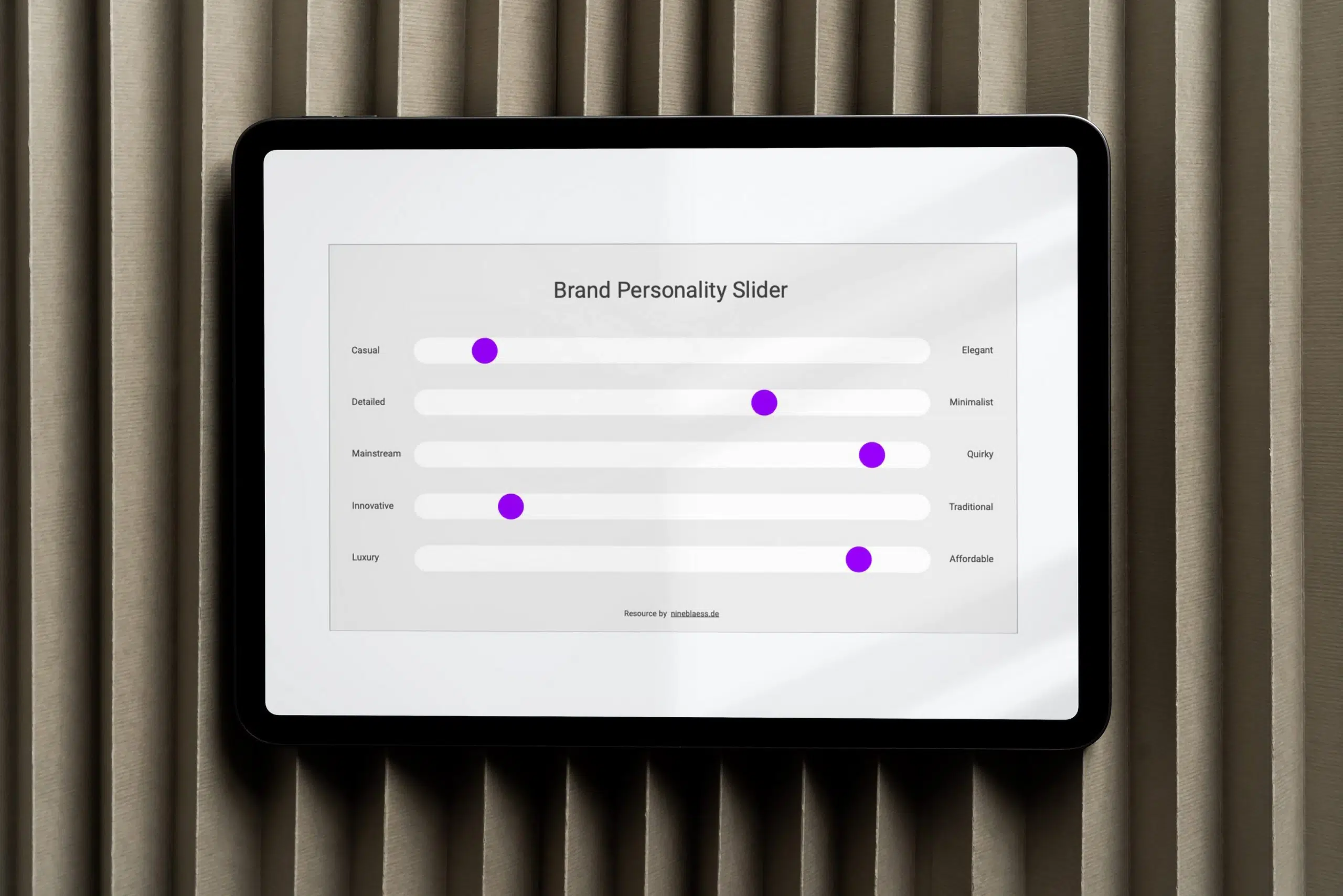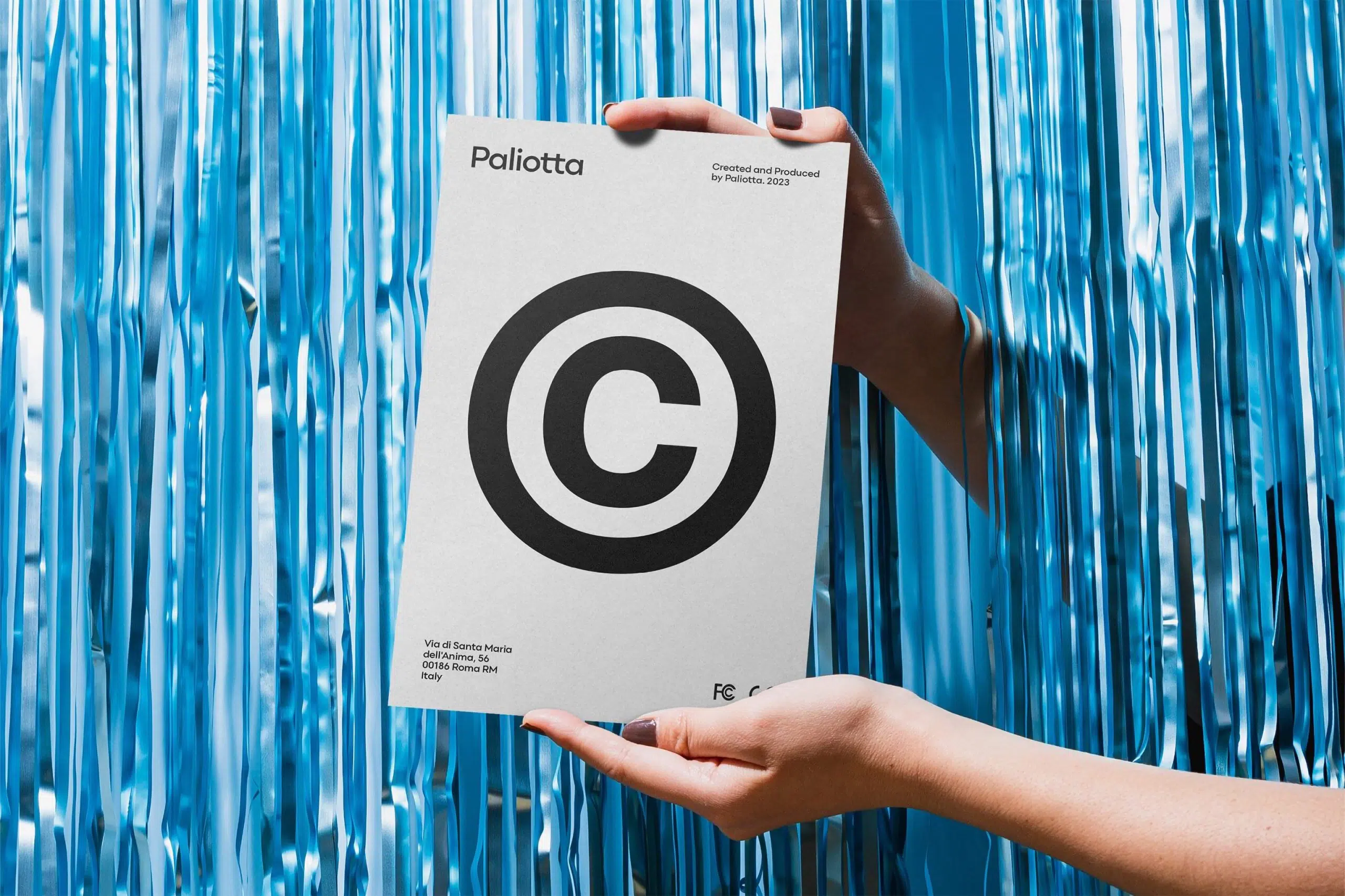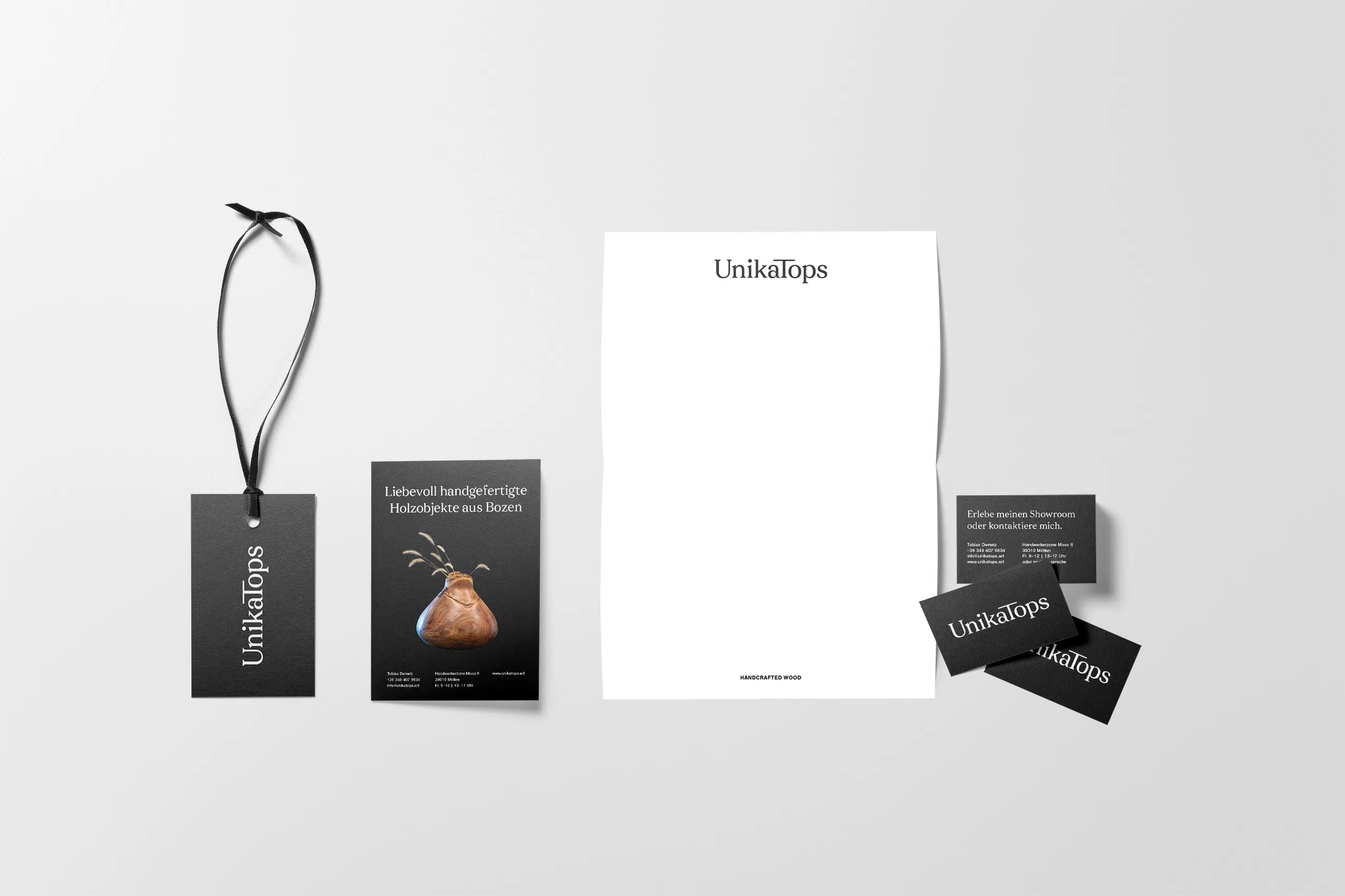The short answer is yes. Not only do websites remain relevant, but they might actually be more valuable than ever.
Here are 15 reasons why I think so:
1. Showcasing your brand
Expressing your unique brand identity
Your website is the perfect stage for expressing your unique brand personality and identity.
It can strengthen your brand by consistently using branded elements like your logo, fonts, colours, brand voice, brand storytelling, and more.
But that’s not all.
On your website, you have absolute control over the narrative. You can influence how people see your brand by communicating strategically and guiding the user to where you want them to be.
Which brings us to the next point.
Creating branded experiences
Unlike print or social media, websites are dynamic and flexible.
You can create an immersive brand experience for your visitors through engaging messaging, images, videos, navigation, and more.
This experience should reflect your brand’s mission, values, and overall brand culture in a way that is attractive to your audience.
The Equinox website is a great example. It allows users to take a virtual tour through the hotel and experience its one-of-a-kind ambience.
2. Growing your audience and boosting brand awareness
Enduring content for greater reach
Your website helps to grow your audience and give your brand the recognition it deserves.
Unlike social media, where posts are quickly overlooked and forgotten, the content on your website is timeless.
When you blog about topics relevant to your audience and industry, you can increase your reach and draw in new visitors without posting something new daily.
But remember: Quality is critical when it comes to SEO.
Building trust through user engagement
Attracting people to your site is just the first step.
With the right design, engaging content and user-friendly navigation, you can pique your visitors’ curiosity and make them return repeatedly.
This is how you gradually build up people’s trust in your brand.
3. Projecting professionalism
Signalling your dedication and credibility
Did you know that 84% of consumers consider a website essential for a business’s credibility?
A professionally designed website sends a clear message: your business is dedicated, serious and professional.
Our brains are wired to take shortcuts (cognitive biases and heuristics), meaning we often draw quick, uninformed conclusions.
The way your website is presented—its navigation, usability, content, and appearance—has a significant impact on the perception of your competence (due to the Halo Effect).
Here are a few ways your website can highlight your company’s expertise:
- Social Proof: You can feature social proof through testimonials and reviews to build trust among potential buyers.
- Industry Alignment: When your website’s tone and design align with the expectations of your niche, it demonstrates your brand’s relevance within its industry.
- Authority: A well-designed website that maintains a consistent and professional appearance while offering valuable information can establish your business as an authority in your industry. Adding certificates and client logos can strengthen your authority further.
Staying competitive
Your competitors are likely already investing in their websites. So, when you want to stay competitive, having a website is not just beneficial—it’s becoming a necessity.
And it’s not just for global businesses. 97% of people use the Internet to learn more about local businesses.
4. Putting the customer experience in your control
Enhancing the user experience
Your website puts you in charge of how customers experience your brand.
Unlike social media, where algorithms and restrictions dictate the rules, you decide how your content is presented on your website.
It’s your call how you want users to engage with your site—where you want them to go and which actions you want them to take.
Richer communication
Similarly, you have full authority over how your content is presented. By blending text, images, videos, 3D graphics, and more, you can craft rich, immersive experiences for your audience.
What’s more, you have access to user behaviour data and testing. So you can continually improve the experience.
You can even tailor the content to individual visitors. We get to that in a minute.
Blog posts, newsletters, and interactive elements like forms and live chats help you connect with your users. This means communication can flow both ways, even when you’re unavailable.
Implementing AI for a better experience
The rise of AI can further boost your customer experience.
According to a Boston Consulting Group survey, 95% of customer service leaders expect AI bots will have a role in serving customers within the next three years.
In the future, this could translate to integrating chatbots that provide personalised solutions to common issues. So your customers or prospects can receive quick answers 24/7.
5. Trusted resource and information hub
Centralised information
Another advantage of a corporate website is that it can become a central hub for all your company information.
Whether it’s product features, thought leadership, contact details or PR links—your website is where it all comes together.
Guiding visitors to take action
With all the opportunities—Instagram, Facebook ads, SEO, … —it’s easy to lose track of your goals.
Your website can become the go-to destination where all your online traffic lands. Once on your site, you can seamlessly direct the visitor to take specific actions, such as buying or contacting you.
Becoming an industry authority
Ultimately, your website can evolve into a one-stop shop for industry-related information—a trusted source for those seeking answers in your field.
A good example is the Deliciously Ella website—a hub for all things wellness and vegan food.
These are some areas where a good understanding of your target audience can optimise your marketing:
6. Gaining consumer insights
We touched on this before.
Your website is an excellent opportunity to gain insights into your target audience. Thanks to Google Analytics and other data collection methods, you can understand your customers like never before.
Here are a few ways to achieve this:
Google analytics and search console
Google Analytics provides in-depth data about your website visitors.
You can find out their age, location, the devices they use, and which pages they visit. This data helps you create content and products that match their interests.
For best results, you can link your Analytics with Google Search Console.
User behaviour tracking
Heatmaps and session recordings can show how people interact with your website.
You can see where they click, how far they scroll, and where they leave. This helps you optimise your website for a better user experience and more conversions.
Keywords and SEO
Keyword research tools like Wordstream’s free keyword tool give you insights into your audience’s search preferences.
Simultaneously, SEO tools like Semrush or Moz offer insights into how people find their way to your site.
This knowledge helps you create content and products that meet your audience’s specific needs.
Customer feedback
Adding forms and surveys to your site lets you collect direct user feedback. Feedback is invaluable for revealing issues, soliciting suggestions for improvement, and learning what your customers want.
Testing
A/B testing means trying different versions of certain website elements, such as headlines, images, or CTA text, to see what works best for your audience.
This process helps you fine-tune your site for better results.
7. Automating your business
Thanks to the wealth of data, your website can streamline and automate some of your business operations. This is how:
Chatbots and AI
Intelligent chatbots can handle common customer questions, provide instant support, and even manage orders or bookings.
This frees up your team for other tasks and provides support around the clock.
Personalisation
Audience data allows you to tailor marketing messages, offers, and interactions to your customers’ individual preferences and behaviours. This makes your customers feel valued and understood, which strengthens their loyalty to your brand.
Read more about personalisation here.
Back-end integrations
Your website can seamlessly connect with tools like customer relationship management (CRM).
This automation can handle tasks like sending follow-up emails, saving time and reducing mistakes.
E-commerce automation
If you run an online store, your website can automate inventory management, order processing, and payment handling processes.
Simplifying content management
Automation can also simplify tasks like scheduling blog posts and optimising content for search engines.
8. Cutting operating costs
A Cost-effective solution
An optimised website can be a game-changer in saving your business money.
Traditional marketing methods like print ads, brochures, and direct mail can be expensive.
In contrast, a website offers a more cost-effective way to reach a broader audience.
Online marketing tactics, like email marketing and social media advertising, tend to be more budget-friendly and may even deliver better results—depending on who your audience is.
Streamlining customer service
As talked about before, websites can also streamline customer service processes, reducing the need for customer support staff.
Features like chatbots and FAQs can quickly address common questions, providing immediate help to users.
Efficiency in product-based businesses
For product-based businesses, e-commerce websites offer the advantage of selling products and services directly to customers.
This might reduce the need for brick-and-mortar locations, resulting in lower overhead costs like rent, utilities, and maintenance.
Scalability at low cost
What’s more, adding more products, services, or content is relatively easy. This means your website stays a cost-effective solution as your business grows.
9. Attracting new talent
Your website doesn’t just have to be a customer-facing platform. It can also help you draw in top talent to your organisation.
Here’s how:
Online job listings
A dedicated careers section offers potential candidates the opportunity to discover jobs and apply.
Conveying professionalism and stability
A well-maintained website can convey your company’s stability and professionalism, making it attractive for job seekers.
Showcasing company culture
Your website can communicate your company’s vision, values, work environment, and employer benefits to attract people who align with your overall culture.
Engaging with potential candidates
You can incorporate interactive elements like contact forms or chatbots that allow potential candidates to reach out with inquiries or submit their resumes directly through your website.
Sharing employee success stories
Your website can also showcase the stories and achievements of current employees to show prospects what’s possible.
10. Helping train staff
Once you’ve successfully attracted new staff, your website can also help onboarding new employees.
Dedicated training section
Consider creating a dedicated section on your website that houses training materials, providing easy access to crucial resources from anywhere.
This approach ensures everyone can access the same information without needing third-party platforms.
Accessibility and flexibility
This approach also offers the advantage of allowing employees to access training materials wherever they are.
To make the training engaging and effective, you can incorporate interactive elements, such as videos, quizzes, webinars, and written content, accommodating diverse learning styles.
Having all your training materials on your website allows easy updates as your business evolves.
11. Security and resilience
At a time of constant change and rising online threats, your website offers a level of security.
Secure and resilient platform
The decentralised nature of your website ensures a direct and secure connection to your customers.
For example, it can shield your business from cyber-attacks and data breaches. It also enables you to react quickly to economic uncertainties or global crises.
Responding to uncertainties
As we deal with international conflicts, climate change, and pandemics, businesses will need to adapt quickly.
The future of Social Media is also uncertain.
In 2018, people spent 50 million fewer hours on Facebook than in the previous year, small businesses keep getting locked out of their Instagram accounts, and former X is considering charging users.
Your website remains a stable and reliable platform under your control. It ensures your audience can always find and interact with your business.
12. Adaptability
Websites are adaptable and versatile assets. You can modify your website’s content, features, and offerings to stay relevant and competitive.
Whether you need to introduce new products, update information, or experiment with different strategies, websites make it all feasible.
Once your website is built, it scales and changes with your business as it grows.
13. Sustainability
One of the reasons I’m so drawn to designing websites is their eco-friendliness.
Reducing the need for printed materials
Websites can do this by reducing the need for printed materials.
Instead of creating brochures, catalogues, and manuals on paper, you can make everything available online. This saves you money and contributes to the environment by reducing paper and ink usage.
Environmentally friendly hosting options
However, let’s not forget website hosting can also be energy-intensive.
The good news is providers are working towards “greener” hosting solutions. So, you can choose eco-friendly hosting options that use renewable energy sources and implement energy-efficient practices to reduce your carbon footprint.
You might like my article about sustainable branding for more tips like this.
14. Global reach
Let’s keep this section short, as we already talked about it.
Your website gives your brand a global presence. It works around the clock, adapts to different languages and reaches an international audience.
15. Ease of build
Building and maintaining a website is easier than ever.
Thanks to many user-friendly website builders, templates, and content management systems, you don’t need much technical knowledge to get started.
Tools like WordPress and Elementor, Squarespace, Webflow and others offer intuitive interfaces that allow you to design and customise your website without any coding skills.
Additionally, there is a wealth of online resources, tutorials, courses, themes, and support communities to help you.
Whether you’re a small startup or a large enterprise, these tools make creating and managing a website a manageable task.
If you need help creating a beautiful and practical website for your business, let’s talk.
Final words—do you still need a website?
As you see, brands still need a website in 2025.
But simply having one is not enough. It must be well-designed, user-friendly, and optimised for search engines and your specific business needs to truly make a difference.
Website-checklist
Here’s a quick checklist to ensure your website serves its purpose effectively:
- Mobile-first design: Use a design that seamlessly adapts to different screen sizes, especially mobile devices.
- Branding: Make sure you create a branded website that seamlessly integrates all brand elements.
- Storytelling: Use the flexibility your website offers to tell your brand story.
- Engaging content: Maximize your website by including rich content, such as copy, images, videos, or 3D graphics, to showcase your products, services, and behind-the-scenes insights.
- All-in-one solutions: Consider optimising your web presence with integrated tools that combine website design, personalisation, automation, SEO, social media, email marketing and more.
- Regular updates: Keep your website updated. Regularly verify information, fix broken links or errors, update plugins and optimise your copy and design.
- Performance monitoring: Continuously monitor your website’s performance. Make necessary adjustments to improve the functionality and user experience.
- Maintenance protocols: Implement regular backups, security updates, and testing to ensure your website runs smoothly and remains protected.
This article contains affiliate links. But I wouldn’t recommend it if I weren’t fully convinced of the product’s quality.
Title image by cottonbro studio





















